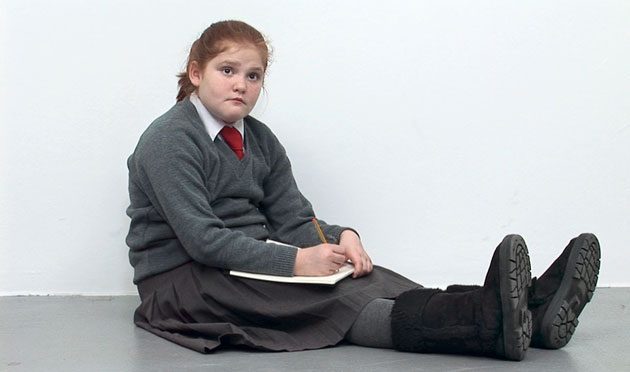We never see the painting, but the children’s imagination triggers our own. In the second film, we see how the school girl Ruth, who is deeply concentrated and at the same time slightly distracted, tries to capture Picasso’s motif in her sketchbook.
Rineke Dijkstra had the idea for the two films in 2008, when she was artist-in-residence at Tate Liverpool, whose collection includes Picasso’s painting, and was fascinated by the museum’s educational work with local schools. She was particularly interested in the ‘work in focus’ sessions, where children studied works for a prolonged time and then were encouraged to discuss them.
With a practised hand, Dijkstra guides me through a whole complex of questions about identity. In other words, how we as human beings become independent individuals, and how we can exist in the world.
Camilla Larsson, curator Bonniers Konsthall.

Seminar: What do children see? 11 May
What do children see, and how do we see children? In connection with Rineke Dijkstra’s exhibition I See a Woman Crying, Bonniers Konsthall has organised a seminar on children’s culture and education.
Participants
Kristoffer Arvidsson, researcher at Gothenburg Art Museum.
Eva Funck, known from her work with Swedish Television’s children’s programming, her own puppet theatre, and her popular children’s guided tours at Bonniers Konsthall.
Jakob Krajcik, artist with educational experience working with children and young adults. Liza Haglund, children’s philosopher, Södertorn University, and Young Philosophy, Södra Teatern.
Erik Uddenberg, playwright at Unga Klara, presently running the project Upbringing. Moderator: Caroline Elgh, assistant curator at Bonniers Konsthall.
Thanks to

![]()